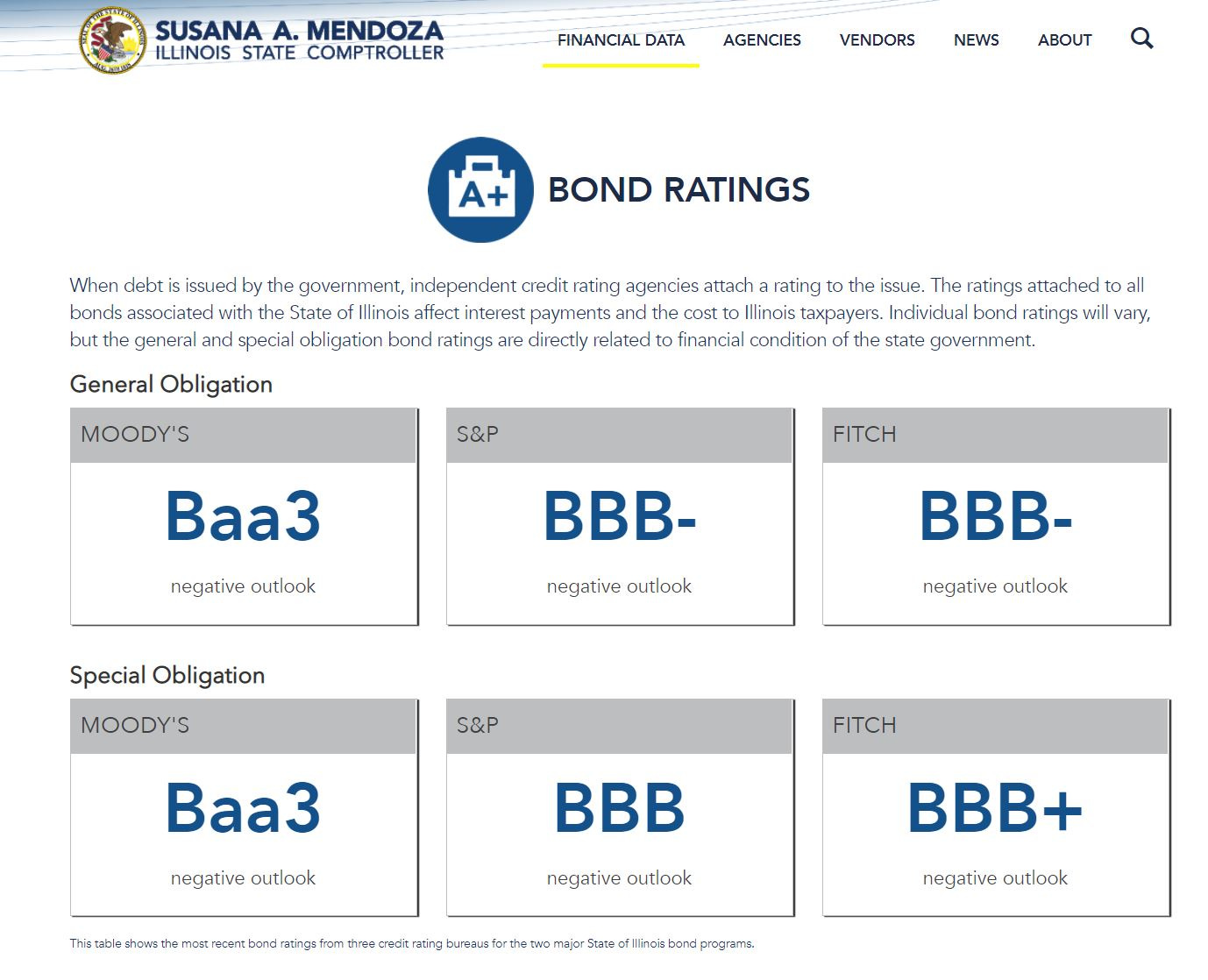On the Bailouts That Didn't Happen, Part 2: State and Local Governments
Merry Christmas - states get nothing!
I am pleasantly surprised to see that Congress has not attempted to add blanket state/local government funding in their recent relief bill wrangling. There was also a general spending bill that went through Congress, which many are conflating with a relief bill, but either way, no special amounts to state and local governments.
Prior posts on state/local government bailouts will be at the bottom of this post.
Which states are really hurting?
Governing: Absent Federal Aid, How Bad Are State Budgets?
Last week, Virginia Gov. Ralph Northam revealed a two-year budget package that included no tax increases and substantial new spending. It would restore nearly half the nearly $3 billion in spending that Northam froze earlier this year, while increasing education spending by $500 million, mostly to help schools retrofit for the coronavirus pandemic. Northam’s budget even allows for more savings, devoting $650 million to Virginia’s rainy-day fund.
…..
Local governments are arguably facing worse conditions than states. A recent survey by the National League of Cities found that municipalities have seen revenues decline by an average of 21 percent, while expenditures have increased by 17 percent due to the pandemic. “It is beyond disappointing that after months of watching our hometowns and our local economies ravaged by COVID-19, congressional leaders have failed to deliver critical support,” says NLC Executive Director Clarence Anthony.
…..
From April through September, all but eight states saw revenue declines, compared with last year, according to the Urban-Brookings Tax Policy Center. Collectively, state revenues are running five percent behind where they were last year. That’s much better than the 20 to 40 percent drops forecast in the spring, thanks in large part to the massive influxes of cash Congress and the Federal Reserve have put into the economy. But the recovery for states has been uneven.“States that have heavy reliance on service industries or tourism, such as Hawaii or Nevada, are in really bad shape because of the reduced business activity in both industries,” says Lucy Dadayan, a senior research associate with the Tax Policy Center. “States that have high reliance on oil or a high reliance on sales taxes have seen steep declines in overall revenues.”
…..
California, and other states, are still waiting on more help from Washington. But the Golden State’s budget is looking healthier than imagined back in June. Gov. Gavin Newsom recently said that his upcoming budget will include a $15.5 billion tax collection windfall. The Legislative Analyst’s Office is even more optimistic, projecting a $26 billion windfall.
…..
Sales taxes in Texas, which has no personal income tax, are down seven percent compared to last year, including an 8.5 percent drop in November. Florida, another state without an income tax, is looking at a $2.7 billion shortfall. Nevada is expecting revenues to be down $400 million, from a $9 billion budget, compared to its pre-pandemic forecast.
…..
But states will have to wait until next year for further assistance from Washington, which may or may not be forthcoming.
BWA HA HA HA HA
Oh sorry, did I say that out loud?
I will note that Illinois wasn’t mentioned in that piece at all (I searched).
Bailouts, bailouts everywhere, but not enough to fill the holes
The one below does include Illinois.
Nicole Gelinas on Dec 13: The Federal Reserve emergency-lending program deserved to die
Last week, Democrats accused Team Trump of acting like sore losers in ending a $500 billion emergency-lending program for states and cities before Joe Biden takes office. Whatever the White House’s motives, it’s time to shut down this program. More borrowing can’t fix its broke beneficiaries, not least the Metropolitan Transportation Authority.
……
Considering that the CARES Act provided $150 billion in grants — no need to pay back! — to states and localities, most could muddle through. If they were to borrow for day-to-day expenses — as opposed to long-term capital investments, the normal reason for borrowing — the biggest impediment isn’t high interest rates in bond markets. Rather, it’s state constitutions that prohibit such debt.So why did the CARES Act authorize the half a trillion dollars in Fed lending directly to state and local government entities?
It’s simple: A few states were in a lot of trouble before COVID-19. Make that one state: Illinois.
…..
Illinois can’t borrow in private markets, not at interest rates it can pay. So it has borrowed $1.2 billion from the Fed’s emergency program and will borrow another $2 billion before President Trump shuts it down. Yes, Illinois must pay a penalty interest rate, under the Fed’s program guidelines, more than 3 percent annually, when the market rate for healthy states is well below 1 percent.Yet this form of payday lending has hardly instilled market discipline. Illinois hasn’t taken any concrete steps to cut spending.
Why start now? The answer is clearly MOAR MONEY!!!!
After Illinois, the Fed’s only payday-lending customer is . . . New York’s MTA.
The state-controlled authority is hardly a paragon of fiscal virtue. But its COVID problem is entirely different from Illinois’: The pandemic has killed ridership. Subway ridership is below 30 percent of normal. So billions of dollars in fares have disappeared. The MTA, too, has borrowed $3.4 billion from the Fed.
Yet it, too, must pay a penalty rate. If the point is to help public entities through a crisis they didn’t create, why punish the MTA with a high interest rate? By 2023, when the MTA’s debt comes due, it plans to take out more debt to repay the Fed — and will owe $150 million in annual interest on these bonds, for decades.
Except the MTA can go bankrupt (in the sense that there’s a process in federal court in which it can discharge its debts), and Illinois can’t.
One can argue that the MTA was hard-hit by COVID because ridership cratered due to the danger of being crowded in a small space with a bunch of potential COVID-infected people. But the MTA had finance problems well before 2020.
Indeed, with all the growth that has occurred since 2009, any state/local government still hurting after a decade of good times obviously had a structural problem in its finances. COVID just makes the crappy fiscal situation more acute. They were going to be failing the very next time there was a serious downturn anyway, which was entirely foreseeable.
What has the actual state/local government revenue hit been and will be?
Brookings: Why is state and local employment falling faster than revenues?
State and local governments are a major piece of the U.S. economy, accounting for about 13% of all employment. They typically have balanced budget requirements, which mean that shortfalls in revenues must be offset with spending cuts or tax increases, actions which hurt taxpayers and impede the economic recovery. State and local governments have cut employment by about 7%—or roughly 1.3 million jobs—since the beginning of the pandemic, which some ascribe to dire fiscal conditions. Cutbacks by state and local governments were a significant restraint on the economy in the slow recovery from the Great Recession.
…..
While we have not updated our estimates, a rough back-of-the-envelope calculation suggests that state and local government revenue losses (including losses by public hospitals and higher education institutions) will likely be something on the order of $140 billion in 2020, $110 billion in 2021, and $100 billion in 2022—that is, $350 billion over three years—roughly 5¼%, 4%, and 3¼%, respectively, below what they would have expected pre-COVID.
That doesn’t sounds like a huge problem requiring bailouts – those types of drops seem to be fairly moderate, and public finance planning should be able to deal with such revenue decreases.
These estimates are roughly consistent with the incoming data on tax collections. The most recent Quarterly Summary of State and Local Tax Revenues from the Census Bureau shows that tax revenues for the first three quarters of 2020 are down about 1% relative to the same period of 2019; without the pandemic, revenues would probably have increased about 3%.
Again, that seems to be a fairly moderate decrease in revenue, though yes, I can understand some spending categories will have increased.
But this author says that state/local governments should be bailed out:
It is quite likely that state and local governments—remembering the long, slow recovery from the Great Recession and the years of budget cutting—have been cautious in their spending even as their revenues come in stronger than expected. Increases in federal aid should provide the cushion that will allow these governments to increase spending without fear of future budget problems, which will help them provide essential services to taxpayers and also improve the overall economic recovery.
No comment.
Predictions for state/local government bailouts
Essentially, people are waiting to see how the Georgia Senate elections go before they really let rip.
But even so, even if Democrats win the seats, I highly doubt they will be able to fill the gaping maw that is the appetite of places like Illinois, New Jersey, and California. Not to mention New York City.
I would think most states, at least, would be able to get operational cover for a year. Huzzah. But the deep, structural fiscal problems of some states can’t be fixed by the federal government. It has to be done within the states themselves.
If the Republicans hold onto their sliver of a majority in the Senate, nothing is going to happen re: state/local bailouts.
When is Illinois going to be downgraded?
Separate from the political strategies of various players, I’m waiting to see what it will take for the rating agencies to finally place Illinois in the junk bin. The cavalry ain’t coming right now, and by January it will likely be clear what amount they might be able to get out of a new Congress.
Bond rating snapshot as of December 24, 2020
Maybe I should make book on which agency will be first to downgrade Illinois to junk, and when it will be. [note: I will not be doing this…. but it might be “fun” to make a poll….]
More state/local government bailout commentary
City Journal: Bailout Bill: Mayor de Blasio can’t conceive of solutions to New York City’s problems that don’t involve massive federal assistance. – just 2 more years of that guy, NYC
Sen. Rick Scott: Republicans Must Not Cave on Blue-State Bailouts
Wirepoints: Pritzker’s Latest Partisan Whoppers On Population Loss And Federal Bailout – Wirepoints
Vox: Congress is forcing cities to defund the police, firefighters, and schools
Mercury News: Walters: No Federal Bailout for California Budget
SF Chronicle: California, hard-pressed cities lose in COVID stimulus deal as aid is left out
Politico: ‘It is madness’: Governors rage over stimulus snub – governors quoted: Cuomo, Murphy. It looks like it’s mainly state finance officials who were quoted, which makes sense.
NYT: Biden Faces Challenge as Congress Drops State Aid to Secure Stimulus
Heritage Foundation: Congress Is Right Not to Pass Bailouts for States and Cities
Selected posts on state/local government bailouts
April 19, 2020: Illinois Asks for $10B for Pensions — Most Disgusting COVID-19 Bailout Yet?
April 30, 2020: State Bankruptcy and Bailout Reactions: No Pension Bailout, No State Bankruptcy Contingent
May 5, 2020: State Bankruptcy and Bailout Reactions: Bail Them Out With Strings Attached Contingent
May 11, 2020: State Bankruptcy and Bailout Reactions: No Bailout, Yes Bankruptcy Group
September 2019: Visualizing the Financial State of the States
From that last post, this gives an idea where the states were in 2019, before the pandemic:
Yeah, it wasn’t COVID that ails NJ, IL, or CT.
Merry Christmas!
I should see y’all on Boxing Day (December 26) with my finance/pension story leftovers. But for now, a toast:
May you have a peaceful Christmas, and may I get sufficient sleep, for once.







